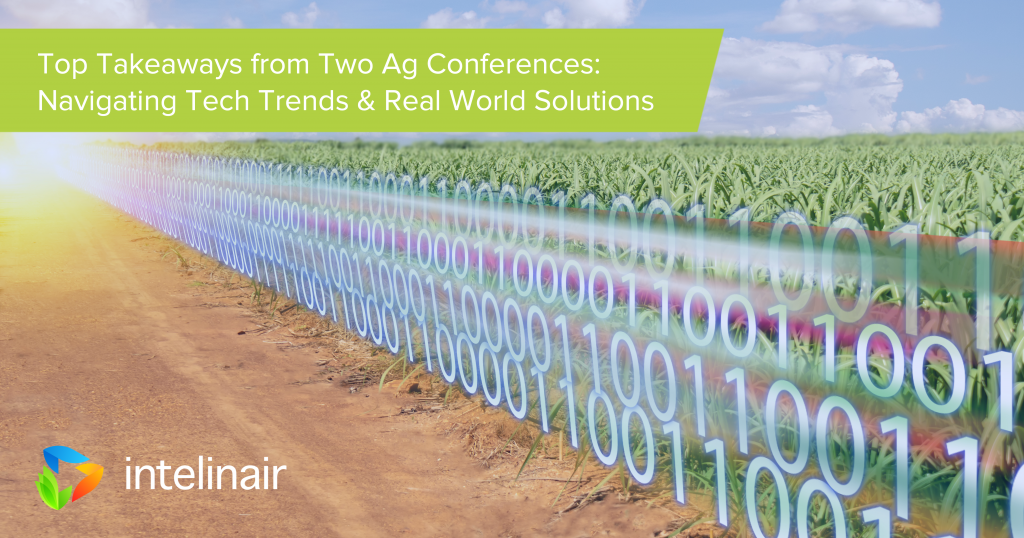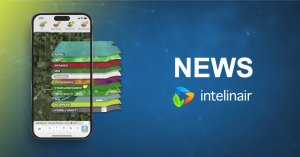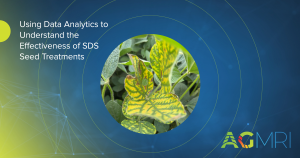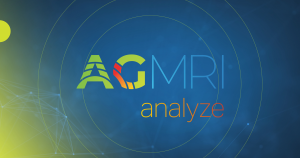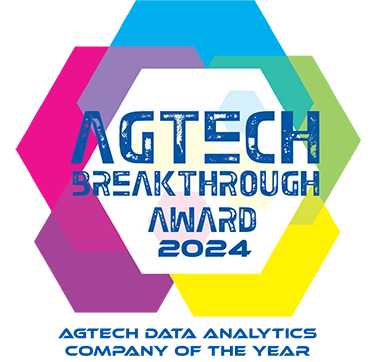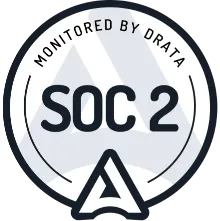By: Kevin Krieg
January ushered in the season of winter ag meetings – a time when farmers, industry experts, and innovators gather to discuss the latest trends, challenges, and opportunities facing the agricultural sector. I had the opportunity to attend two large conferences – The VISION Conference in Glendale, Arizona, and Iowa Ag Expo in Des Moines. As industry leaders, tech enthusiasts, and farmers alike converged at these events, important discussions emerged regarding the challenges and opportunities surrounding the adoption of technology in agriculture. Let’s take a closer look at some of the key insights and takeaways from these important gatherings.
 At the VISION Conference in mid-January, a gathering of forward-thinking executives from the ag tech community painted a picture of the future, where cutting-edge technologies like artificial intelligence (AI) and automation promise to revolutionize farming practices. True to its theme, “Unlocking the Value of Innovation,” the focus was finding innovative solutions to address pressing challenges, such as increasing yields and reducing waste. However, amidst the excitement of futuristic possibilities, the practical realities of implementation were highlighted at the Iowa Ag Expo.
At the VISION Conference in mid-January, a gathering of forward-thinking executives from the ag tech community painted a picture of the future, where cutting-edge technologies like artificial intelligence (AI) and automation promise to revolutionize farming practices. True to its theme, “Unlocking the Value of Innovation,” the focus was finding innovative solutions to address pressing challenges, such as increasing yields and reducing waste. However, amidst the excitement of futuristic possibilities, the practical realities of implementation were highlighted at the Iowa Ag Expo.
 As the third-largest indoor agricultural show in the United States, the Iowa Ag Expo provided a platform for farmers to connect with tangible solutions, from heavy machinery to software applications. Unlike the visionary atmosphere of the VISION Conference, the Expo underscored the importance of ensuring technological innovations align with the needs and workflows of farmers on the ground.
As the third-largest indoor agricultural show in the United States, the Iowa Ag Expo provided a platform for farmers to connect with tangible solutions, from heavy machinery to software applications. Unlike the visionary atmosphere of the VISION Conference, the Expo underscored the importance of ensuring technological innovations align with the needs and workflows of farmers on the ground.
One key takeaway from these conferences is the necessity for agricultural technologies to complement existing workflows rather than disrupt them. I heard emphasized throughout the meeting the importance of solutions that streamline farmer operations and deliver tangible benefits – without adding complexity. Not surprising to those of us in bringing innovation to agriculture, technologies that can demonstrate a clear return on investment in terms of time savings and economic gains are more likely to gain traction among farmers.
Artificial intelligence emerged as a central theme, offering promise in optimizing decision-making processes. With the ability to analyze vast amounts of data and identify patterns, AI has the potential to empower farmers to make more data-driven and strategic decisions, ultimately leading to improved outcomes.
Furthermore, the rise of automation and autonomy in agriculture presents both opportunities and challenges. From autonomous machinery to drone technology, these innovations offer the prospect of increased efficiency and productivity. However, I was also reminded that successful implementation requires careful consideration of factors such as integration with existing systems and ensuring ease of use for farmers.
In conclusion, the insights gleaned from these two agricultural conferences underscore the importance of balancing technological advancements with practical considerations. By prioritizing solutions that address real-world challenges, harnessing the power of AI, and carefully navigating the transition to automation and autonomy, the agricultural sector can pave the way for a more sustainable and efficient future.
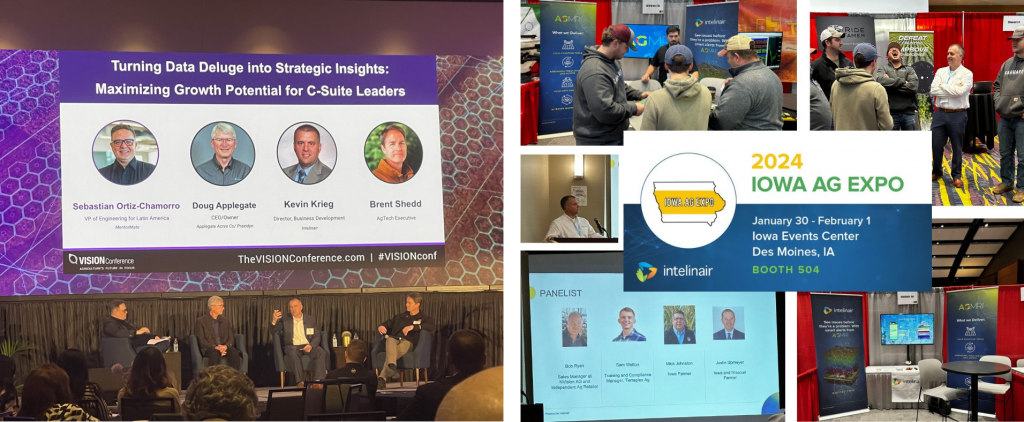
 Kevin Krieg is the Director of Business Development for Intelinair. Prior to joining Intelinair, Kevin spent 24 years at John Deere and two years at CNH Industrial. At John Deere, he was part of the Intelligence Solutions group, where he led the release of the JDLink™ solution and later led the team to open up the John Deere Operations Center. At CNH Industrial, he was responsible for the marketing, training, and customer support of the AFS Connect and PLM Connect Farm portals. Kevin earned a BS degree in electromechanical systems from the University of Northern Iowa and an MBA from the University of Phoenix. He grew up on the Krieg family farm in Northwest Iowa.
Kevin Krieg is the Director of Business Development for Intelinair. Prior to joining Intelinair, Kevin spent 24 years at John Deere and two years at CNH Industrial. At John Deere, he was part of the Intelligence Solutions group, where he led the release of the JDLink™ solution and later led the team to open up the John Deere Operations Center. At CNH Industrial, he was responsible for the marketing, training, and customer support of the AFS Connect and PLM Connect Farm portals. Kevin earned a BS degree in electromechanical systems from the University of Northern Iowa and an MBA from the University of Phoenix. He grew up on the Krieg family farm in Northwest Iowa.
About Intelinair
Intelinair elevates agronomic management decisions by providing insights all season long to farmers and ag retailers through its easy-to-use interactive platform. High resolution aerial imagery from fixed wing airplane, satellite, or drones provides whole field views increasing efficiency by prioritizing fields and offering assurance that fields are monitored and reviewed for timely decision making and identifying sustainability opportunities. Intelinair analyzes millions of acres in the U.S. and several other countries from its headquarters in Indianapolis, Indiana. Learn more at intelinair.com.

